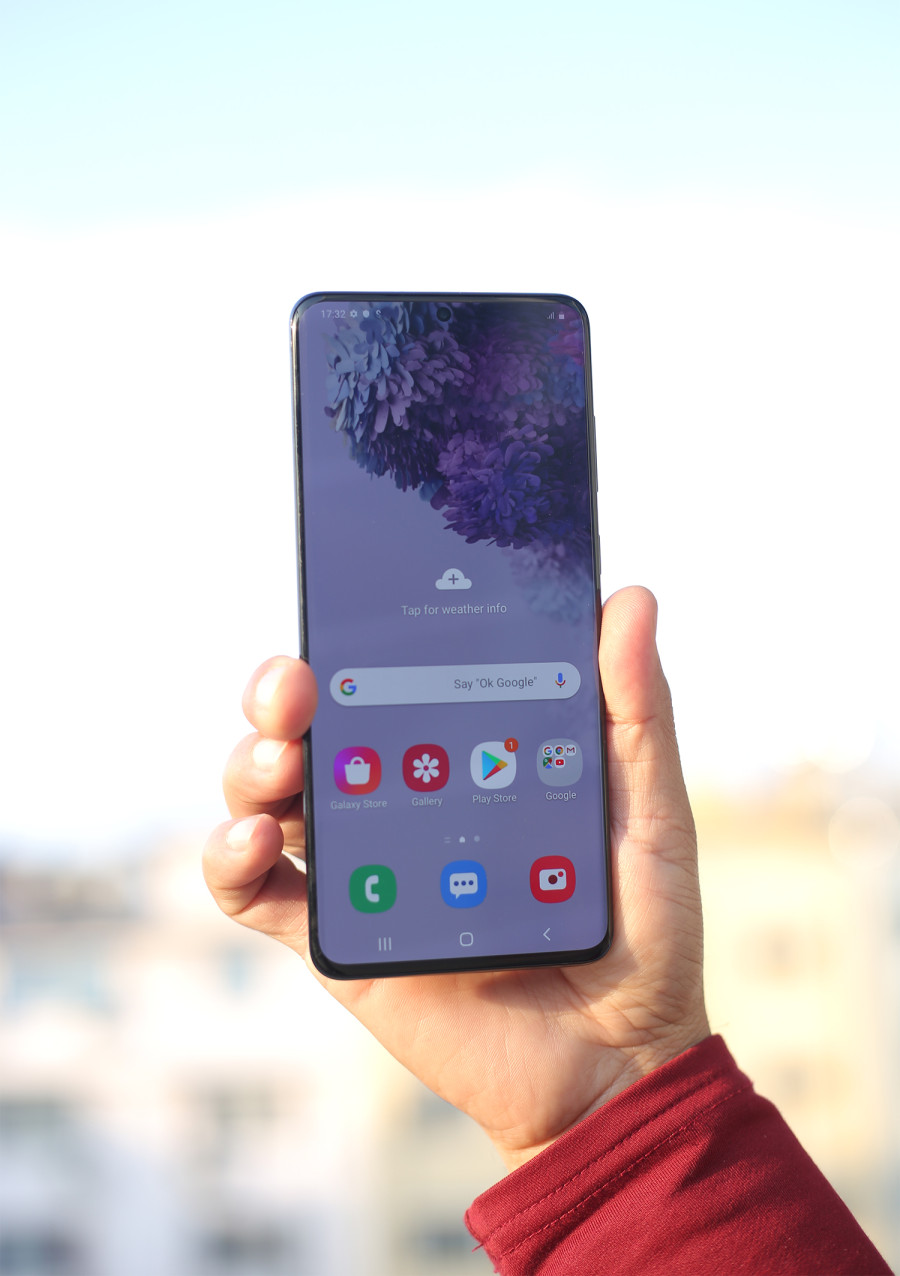Weekender
Familiar yet different
The classiest Android flagship you'll find right now.
Ajeeja Limbu
“Did you buy a new phone?!”, my colleagues asked when I showed them the latest S20+ from Samsung. They were surprised that I was carrying around Samsung’s newest flagship considering I had bought the S10 less than a year ago. On paper, both my S10 and the latest S20+ are IP68 water-resistant, have ultrasonic in-display fingerprint sensors and amazing AMOLED displays. However, the S20+ does have a few aces up its sleeve with the blazing-fast 120Hz display and ‘revolutionary’ camera setup. But is it enough for me to switch? Let’s find out.
Design
The S20+ is a big phone yet it feels strangely comfortable in the hand. But it is still a tall phone nonetheless. Horizontal reach and one-handed typing are fine but you will have to do some finger gymnastics to reach the top of the phone unless you have the hand span of an NBA player. I did not have a case on the S20+ and it was slippery as an eel.
The curved screen on the S20+ is also more subtle compared to last year's models. There is less chance of accidental touches when shifting the phone in your hands. Samsung has managed to shrink the top and bottom bezels ever so slightly to give the S20+ an insane 90.5 percent screen to body ratio. For comparison, Apple’s iPhone 11 Pro Max has a measly 83.7 percent screen to body ratio. And there is no notch taking up valuable screen estate, just a small camera hole. I thought watching YouTube on my S10 was immersive but on the S20+, it just sucks you in.
And there is absolutely no question that Samsung makes some of the best displays in the market. And this year, Samsung is raising the bar even higher. The 6.7-inch AMOLED display offers unbelievably vivid colours that just pop off the screen. The display on the S20+ is also HDR10+ certified and has a 120Hz refresh rate. This means that the screen will refresh up to 120 times every second to give you an even smoother experience while using the phone. But to use this high refresh rate, you will have to dial down the native QHD+ resolution to FHD+. I was initially skeptical about the 120Hz screen as I did not want to sacrifice resolution for a high refresh rate. But after using the S20+, I can safely say that I am all for a screen with a high refresh rate. The difference is like night and day. You notice smooth navigation throughout the OS as well as in games. I’m just worried that I have to go back to my ‘slow’ S10 which has a 60Hz screen like most smartphones. Using the S20+ in direct sunlight is no problem as the display can achieve a peak brightness of up to 1200 nits. Once again for comparison’s sake, the iPhone 11 Max Pro only hits 821 nits.
Hardware
Samsung boasts that its S20 lineup will change the smartphone photography landscape. But does it really? Sure, you get three rear cameras on the S20+, a 12-megapixel (MP) wide-angle unit, a 12MP main camera and a 64MP 3x zoom lens. And on the front, a 10MP unit handles selfies. The wide-angle and main camera produced similar photos to my S10. Excellent photos in daylight but nothing too game-changing. The S20+ does produce sharper images than my S10 but I had to really zoom in to find differences and at that point, I was really just splitting hairs. But I was curious to test the 64MP unit the most. Samsung says that it uses multi-frame ‘space-zoom’ to achieve up to 30x zoom but I was not impressed with the quality. The photos come out grainy and you need lots of sunlight to make it work well. You will have to set it up in a tripod to reduce the camera shake for the best results. To me, it feels more like a party trick to wow your friends.
However, low-light photos taken with the S20+ look considerably better than my S10. The details are clearer with less smudging and images are sharper overall.
But one area that the Samsung S20 lineup stands head and shoulders above the competition is the ability to record 8K video. You have to understand that while most phones can record 4K video to some extent, Samsung S20+ can record four times the number of pixels when shooting 8K video. This allows you to crop and edit videos without sacrificing quality. But with the technology being so new, you are limited to only 24fps and Samsung’s advanced stabilisation tech—Super Steady—does not work with 8K recording (that is only available in 1080p recording).
Performance and battery life
With bleeding edge recording features available, the Korean company has equipped the S20+ with its latest Exynos 990. The octa-core processor combined with 8GB of RAM handles everything you throw at it, from playing demanding games to multitasking with ease. More game developers also are supporting high refresh rate screens like the one on the S20+. So I played Alto’s Odyssey at 120Hz for an hour and I fell in love with the game all over again. The gameplay felt smoother than on my S10 and the phone remained cool as a cucumber. Battery life is also excellent on the S20+ thanks to the massive 4500mAh battery. I was browsing Reddit while YouTube played in the background (using a 3rd party app) and the phone just sipped power like an old lady drinking tea. Depending on your usage, you can easily expect the S20+ to last a full day on a full charge. The device also supports Super Fast charging and wireless charging.
Verdict
I nearly bit the bullet when the S20 and S20+ pre-booking notification popped up on my phone. The price along with the pre-booking offers seemed decent but my S10 is still rock solid and the few upgrades were not enough for me to switch though the new 120Hz screen is seriously making me consider switching. But for anyone else with older phones or thinking about leaving Apple’s walled garden, the S20+ is an amazing piece of kit. I do miss the headphone jack but Samsung has you covered with their amazing Galaxy buds which I use far too much. The Samsung Galaxy S20+ has, in my opinion, one of the best displays in the market and the camera setup is inching ever so closer to DSLR quality.




 7.12°C Kathmandu
7.12°C Kathmandu










